InTrans / Aug 07, 2014
Suburban sprawl series: Wait, what is a suburb?
Go! Magazine
 posted on August 7, 2014
posted on August 7, 2014
The Suburban Sprawl Series is a two-part story of how transportation has impacted our living spaces, and vice versa. The suburban sprawl trend that rapidly took hold in the 1950s still influences our housing and transportation options today. This series is meant to inform upcoming generations about how their decisions on where to live impacts our transportation environment, as well as their own personal lives. Note that suburbs have a long, complex history. In this series, we will refer to suburbs in the modern context (1950s to now) to frame how transportation and housing affect one another. To learn more about the future of suburban sprawl, read: “Young people driving less.”
Wait, what is a suburb?
What is the difference between the city and a suburb? Suburbs are not really urban, and definitely not rural, so what are they? A modern suburb, as shown in Figure 1, is roughly defined as a residential area outside of the city.
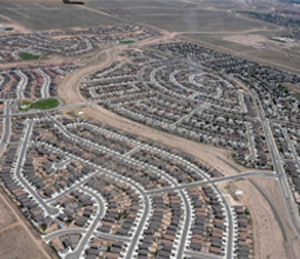
Modern suburbs are areas of low density housing that were purposefully developed during the 1950s (although the history of suburbs go back way further!) to give people more living space, among other reasons. Because the initial purpose of these suburbs was to create more housing, businesses did not come along until later. Businesses, like commercial strip malls shown in Figure 2, had to locate at the edge of subdivisions. Businesses were not allowed to develop in residential areas, which made distances between homes and businesses much further. As a result, having a personal car is almost a necessity to live in today’s suburb to reach many amenities.
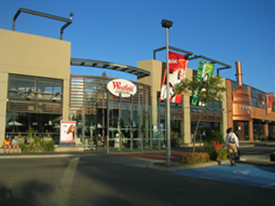
Why move to the suburbs?
Simply put, part of people’s reasoning to move from the city to the suburbs was for more space at an affordable price. Elfreth’s Alley, in Figure 3, is the first residential area built in the United States, dating back to the mid-1700s. Elfreth’s Alley might be a good illustration as to why people were motivated to move to the suburbs in the first place—more elbow room from neighbors and businesses, please!
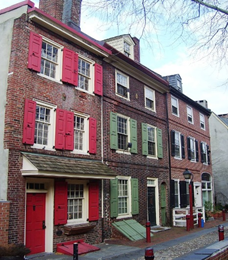
What makes a city a city?
The city is known for having a dense population and businesses. One of the many purposes of a city today is to support a strong business. For many years, these businesses offered employment opportunities, and therefore, created the need for surrounding residential areas. In some of our most well-planned cities, the integration of residential and business areas has created areas conducive for walking, biking, busing, and other non-vehicular transportation options. Urban developments that foster mixed uses and various transportation options, as shown in Figure 4, fit into the trending smart growth concept. (See a related Go! Article, “Young people driving less.”)
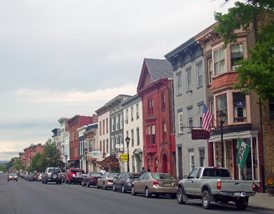
History of suburban growth
Before personal automobiles, suburbs were concentrated around the main mode of transportation to the city: commuter trains (See a related Go! Article, “A blast from the past: Cars in the US.” Commuter cars in the mid-1800s, as shown in Figure 5, limited outward expansion of suburbs while still allowing more elbow room to residents without additional infrastructure.
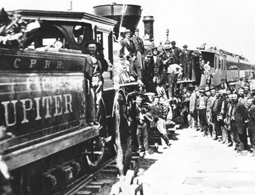
Once World War II ended in 1945 and our military personnel returned to the United States, our population grew rapidly. The government’s response was to enact the so-called “GI Bill” that, among other things, approved long-term mortgage loans with low interest rates for veterans.
This, along with the widespread increase in personal automobile ownership and the 1956 Federal Highway Act, helped lead to a surge of single-family residential areas, which became what is now known as suburban sprawl. Fast forward to the 21st century and you see an explosion in the number of suburbs. This is attributable not only to U.S. population growth, but also to the popularity of personal vehicles and the highway system, which make traveling great distances fairly simple (see Figure 6).
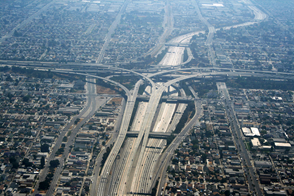
Unfortunately, the ability to travel far distances by personal vehicle has placed a strain on our infrastructure. Covering the expense of building and repairing more highways, bridges, and roads is a major challenge. Suburban expansion is unsustainable for many reasons, including its reliance on personal vehicle use. This level of use simply cannot be continued if we want to retain our current infrastructure for years to come.
What will future generations decide?
Thankfully for our infrastructure, suburban expansion seems to have plateaued. With future generations choosing more non-vehicular modes of travel and opting to live in urban areas, there may be less interest in suburban living.
By Jackie Nester, Go! Staff Writer